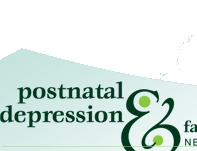 |

Alcohol abuse and dependence
Twelve month prevalence figures from the 2006 New Zealand Mental Health Survey (Te Hinengaro).
- Alcohol Abuse 2.6% overall, but 7.1 % in 16-24 age group.
- Dependence 1.3% overall, but 3.0% in 16-24 age group.
- This encompasses the idea of physiological dependence, dyscontrol, salience and the psychological and physical problems which often accompany alcohol and drug dependence.
- Tolerance and withdrawal do not have to be present. If they are, it would usually mean a more severe dependence.
For more information
See information for women on alcohol.
Core Features of Substance Abuse
Core Features
- failure to fulfil major role obligations at work, school, or home (e.g., neglect of children or household) as a result of the substance use
- recurrent substance use in situations in which it is physically hazardous (e.g., driving an automobile or when caring for an infant)
- recurrent substance-related legal problems
- continued substance use despite having persistent or recurrent social or inter-personal problems caused or exacerbated by the effects of the substance (e.g., arguments with partner about consequences of intoxication, physical fights)
|
Core Features of Alcohol or Substance Dependence
Core symptoms
A maladaptive pattern of substance use, leading to clinically significant impairment or distress, as manifested by three (or more) of the following, occurring at any time in the same 12-month period:
- tolerance; which is exhibited if markedly increased amounts of a substance are needed to achieve intoxication or the desired effect, or using the same amount results in a markedly diminished
- withdrawal; as manifested by either the characteristic withdrawal syndrome for the substance or the same (or a closely related0 substance is taken to relieve or avoid withdrawal symptoms
- escalating use; the substance is often taken in larger amounts or over a longer period than was intended
- loss of control; there is a persistent desire or unsuccessful efforts to cut down or control substance use
- salience; a great deal of time is spent in activities necessary to obtain the substance (e.g., visiting multiple doctors or driving long distances), use the substance (e.g., chain-smoking), or recover from its effects
- reducing activities; important social, occupational, or recreational activities are given up or reduced because of substance use
- harm; the substance use is continued despite knowledge of having a persistent or recurrent physical or psychological problem that is likely to have been caused or exacerbated by the substance (e.g., current cocaine use despite recognition of cocaine-induced depression, or continued drinking despite recognition that an ulcer was made worse by alcohol consumption)
Dependence may occur with or without Physiological Dependence.
|
|
 |






